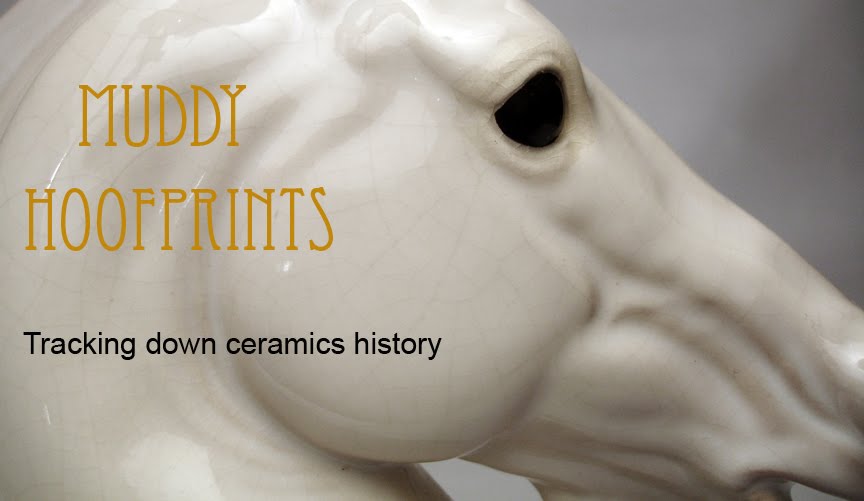'Twas the night before Christmas, when all through the house
Not a clinky was stirring, except a green mouse;
The foam boxes were set by the armoire with care,
In hopes that St. Clinkolas soon would be there;
The collectors were nestled all snug in their beds;
While visions of Special Runs danced in their heads;
And ending eBay's mischief, as I'd hit my cap,
Had just settled invoices for a long winter's nap,
When out in the cabinet arose such a clatter,
I sprang from my bed to see what was the matter.
Away to the curio I flew like a flash,
Tore open the doors veneered crisply with ash.
The cabinet lamp brought forth a warm glow,
Gave a Luster of Pearl to objects below,
When what to my wondering eyes did reveal,
But a Miniatures sleigh and ponies plumed with chenille,
With a little gloss driver missing a chink,
I knew in a moment he must be St. Clink.
More torpid than mudfish his castings they stood,
And he whistled, and shouted, like he does in his 'hood:
"Now, Splasher! now, Saggar! now Lera and Kaolin!
On, Biscuit! on, Liquid! on, Dauber and Porzellan!
To the top of the chifforobe! the one near the wall!
Now dash away! dash away! dash away all!"
As clay motes before the old SlipMaster fly,
When they meet with whirl'd water, mount to the sky;
So up to the wardrobe the castings they flew
With the sleigh full of clay, and St. Clinkolas too—
And then, in a tinkling, I heard sharp as a tack
The assembly all settling right next to the plaque.
As I lifted my head, and was turning around,
Down the dresser St. Clinkolas came with a bound.
He was dressed in raku, from his head to his foot,
And his clothes were all burnished with ashes and soot;
A crate lined with foam he had hung on his back,
And he looked like a shower about to unpack.
His glaze—how it twinkled! his details, how merry!
His cheeks were like Rosenthal's, his nose à la Barye!
His claybodied mouth was drawn up like a bow,
And his beard slip-trailed as white as the snow;
The stump of a stilt he held tight in his teeth,
And white engobe, it encircled his head like a wreath;
He had a broad face and a wide belly-hole
That he covered with a sticker, makeshift camisole.
He was chubby and plump, a right jolly old elf,
And I laughed when I saw him, here flown from my shelf;
A lash-dot tri-eye and the tilt of his head
Soon gave me to know I had nothing to dread;
He spoke not a word, but went straight to his job,
And filled all the foam boxes: drafters, stock horse, and cob,
And laying his finger aside of his nose,
And giving a nod, up the chifforobe he rose;
He sprang to his sleigh, to his team gave a click,
And back to my cabinet they flew very quick.
But I heard him exclaim, ere he turned out the light—
“Happy Christmas to all, and to all a good night!”
(with apologies to Clement Clarke Moore)














































